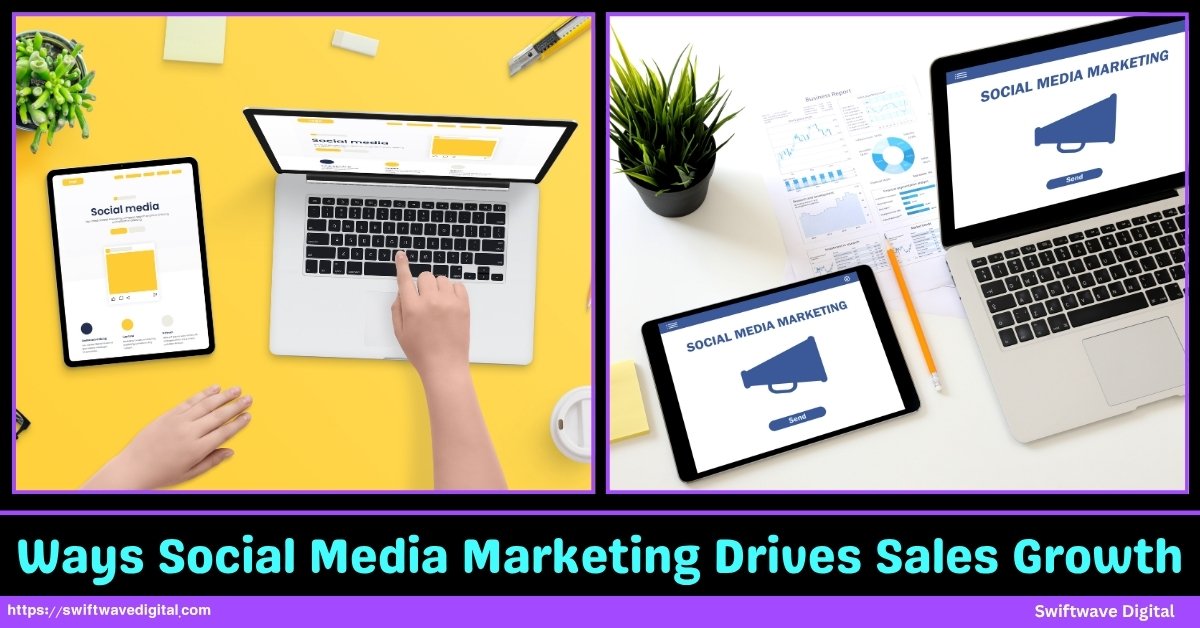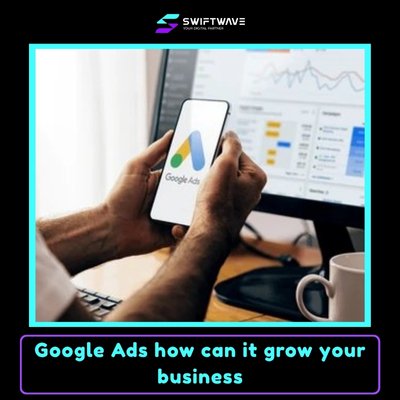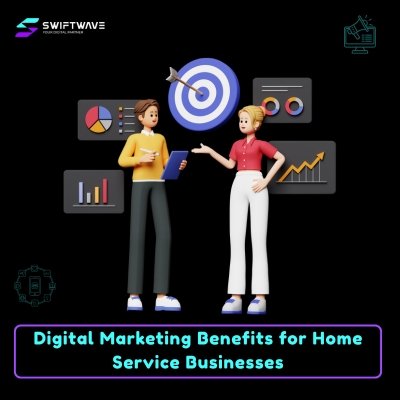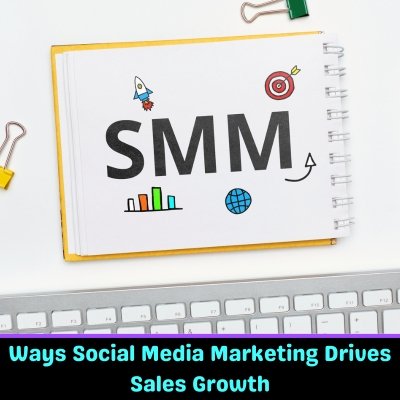Social Media Marketing has become a driving force behind business growth in the digital era. It’s no longer just about posting content it’s about creating measurable impact that leads to real sales.
With billions of active users across platforms like Facebook, Instagram, LinkedIn, and TikTok, brands today can connect directly with their audience, build trust, and convert interest into revenue faster than ever before.
From increasing visibility and engagement to driving targeted traffic and customer loyalty, social media now plays a direct role in shaping a company’s bottom line.
Ways Social Media Marketing Drives Sales Growth
In this guide, we will explain the key ways Social Media Marketing drives consistent and sustainable sales growth for modern businesses.
Building Brand Awareness
Social Media Marketing starts with visibility the foundation of every sales strategy. Brand awareness is the first step toward creating a pipeline of potential customers.
Platforms like Facebook, Instagram, LinkedIn, and TikTok give brands the power to reach millions of people daily. The more people see and recognize a brand, the more likely they are to trust and remember it when making a purchase decision.
Regular posting, consistent visuals, and clear messaging help a business stay top-of-mind. Awareness doesn’t mean random reach it means showing up repeatedly with a clear message.
By consistently posting relevant content and engaging with your audience, you create familiarity. That familiarity builds credibility, and credibility leads to conversions.
When people recognize your brand, they’re already halfway to becoming customers. Brand awareness is not just about being seen it’s about being remembered for the right reasons.
Targeted Reach and Precision
One of the biggest strengths of social media marketing is targeting precision. Unlike traditional advertising, where you broadcast to a wide, random audience, social media allows you to narrow down exactly who sees your message.
Businesses can target users based on age, gender, interests, location, profession, and even online behavior. This means you can reach people who are actually likely to buy from you not just anyone scrolling.
Platforms like Meta Ads and LinkedIn Ads make this process data-driven, where every impression counts. Precision targeting ensures that your ad spend brings in qualified leads instead of wasted traffic.
By refining your target audience over time, you increase return on investment and focus on people who are genuinely interested in your product or service. The end goal is simple better targeting means better leads, and better leads mean more sales.
Engagement & Social Proof
Once awareness is built and your target audience is defined, engagement becomes the driving force that converts interest into action. Engagement is the bridge between visibility and sales.
When users comment, share, or react to your content, they’re actively interacting with your brand. This interaction builds trust. Social proof in the form of likes, testimonials, and reviews is a psychological trigger that influences purchasing behavior.
People trust what other people recommend. A high level of engagement signals credibility and reliability to potential buyers. The more your audience engages, the more likely algorithms will push your content to new viewers, creating a cycle of organic visibility.
Engagement-focused strategies, such as polls, Q&A sessions, or user-generated content, help you connect with your audience on a human level. The stronger the connection, the easier it is to convert that engagement into sales.
Driving Traffic and Conversion Opportunities
Social media is a major traffic driver to websites, eCommerce stores, or landing pages. Every post, ad, or story should serve a purpose — bringing users closer to your conversion point.
Clear call-to-actions (CTAs) like “Shop Now,” “Learn More,” or “Book Today” guide users from discovery to purchase. Platforms like Instagram and Facebook support direct link placements, while LinkedIn and Twitter help drive quality leads to business websites.
Retargeting ads further enhance conversions by reminding users who previously engaged but didn’t buy. This consistent reminder often leads to final action.
A well-planned funnel from awareness posts to promotional offers keeps users moving forward.
The more traffic you generate with intent, the greater your conversion potential. In simple terms, social media drives traffic, and traffic turns into opportunities that result in real sales growth.
Multi-Platform Strategy & Reinforcing Messages
Different platforms attract different audiences and using multiple platforms strategically maximizes reach. A multi-platform presence ensures your brand appears wherever your customers spend their time.
For example, Instagram focuses on visuals, LinkedIn on professional insights, and TikTok on quick engagement. By repurposing your content to fit each platform’s tone and format, you deliver consistent messages across varied audiences.
Repetition reinforces brand identity. When people see your content on multiple platforms, it builds trust and strengthens recall. Consistency is the key: unified colors, tone, and message create recognition.
A brand that appears regularly and consistently across social media creates authority.
Multi-platform strategy isn’t about being everywhere randomly it’s about being present where it matters most and ensuring your message stays consistent.
The result is stronger visibility, reinforced messaging, and ultimately, increased sales potential.
Social Commerce & Direct Sales Channel
Social media is no longer just a marketing tool; it’s a complete sales ecosystem. Social commerce selling products directly through platforms like Facebook Shop, Instagram Shopping, or TikTok Shop removes friction between discovery and purchase.
Customers no longer have to visit multiple pages to buy; they can purchase directly within the app. This seamless experience reduces drop-offs and increases conversion rates.
Social platforms also enable product tagging, allowing customers to click and buy instantly. As social commerce grows, it becomes a vital part of any sales strategy.
Businesses that adopt it early gain an edge by meeting customers where they already spend their time. The easier you make it for users to buy, the faster your sales grow.
Social commerce turns your social pages from awareness tools into revenue-generating channels that directly impact your bottom line.
Data, Analytics & Continuous Optimization
Data is what separates guesswork from growth. Every social media action generates measurable insights — impressions, reach, clicks, engagement, conversions, and cost per result.
Analyzing this data helps you understand what’s working and what’s not. By reviewing campaign reports regularly, you can refine strategies, reallocate budgets, and improve messaging.
Metrics like click-through rate (CTR) and return on ad spend (ROAS) reveal how efficiently your campaigns are performing. Continuous optimization means testing new creatives, adjusting audience segments, and improving ad placements.
The more you measure, the more accurately you can predict performance. In short, analytics ensure that every rupee or dollar spent on social media contributes to growth.
Businesses that track and optimize based on data see consistent improvement in both reach and conversions — making social media a scalable sales engine.
Building Customer Relationships & Repeat Sales
Sales growth doesn’t end after the first purchase it continues with retention and repeat sales. Social media provides a direct communication channel with existing customers.
Responding to comments, resolving issues, and sharing updates builds loyalty. Engaged customers are more likely to recommend your brand and buy again. Maintaining post-purchase contact through social media creates a sense of community.
Regularly posting valuable content, running loyalty programs, or offering exclusive discounts for followers helps retain customers. Repeat customers not only spend more but also become advocates who bring in new buyers through word-of-mouth.
The cost of retaining an existing customer is significantly lower than acquiring a new one. Social media keeps your brand relevant, accessible, and trusted — essential elements for long-term growth and consistent sales.




